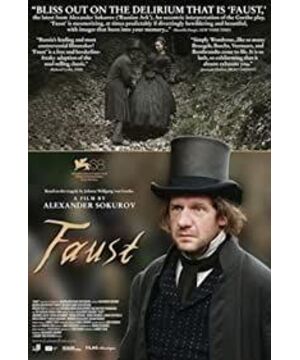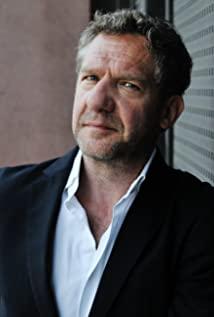Does the soul exist or not, the hopeless discussion of film and philosophy whether the soul exists or not? What does it look like when it is out of the flesh? What can it be used for?
In recent years, two American films have attempted to explore it in a slightly serious but still pop-culture framework. "21 Grams" tells us about the weight of the soul, and "Frozen Soul" presents the soul as something the size of a jug and can be stored and rented.
Intellectuals may feel that it is really not up to the shallow Yankees to answer these questions. Who can be the answerer about the soul? The answer that can be given after combining the history from ancient times to the present combined with the observation of national character, one is the Germans who are good at thinking, who made them so many philosophers; the other is the Russians who behave extremely , Look at the guys who fell into the ice and snow, holding vodka in their hands and asking their souls in pain. Before biologists and psychologists had the ability to extract the soul, the most thorough observer was Goethe. His masterpiece "Faust", which took 64 years to complete, conveyed a classical The mythical road movie-like picture makes Faust, a medieval scholar who is eager for knowledge and always hesitate in self-denial, meets Mephisto, the devil who exudes temptation, and talks about a grand and terrifying exchange of souls. Business.
For the script of this classic mythical road film, Lumière, the grandfather of this industry, tried to adapt it from the end of the 19th century when the new medium of film appeared, followed by the German expressionist film master Murnau, the Czech surreal animation master Yang Shiyunmei Yes, even Hollywood star Richard Burton has further conveyed his understanding of the world's first soul messenger, Faust, in the increasingly developed video technology.
With regard to the soul, any attempt to explain it in the form of an image story is doomed to be superficial.
In fact, two hundred years ago, with the support of Descartes' mathematical logic, the philosopher Kant pulled later thinkers into a dead end where mathematical logic was used to verify "whether the soul exists". Many smart people spend their whole lives in the depths of the hutongs and can't figure it out. Yang Jiang immersed himself in translating Plato's dialogues "Phaedo" in sadness; Derrida, Lacan, and Foucault dig deeper and deadlier in the depths of the dead end called structuralism, postmodernism, deconstructionism , surrealism, neo-structuralism, super-new post-existentialism and other dead ends; Nietzsche was so annoyed that he stopped playing with those philosophers; Dostoevsky couldn't figure it out, so he simply gave up.
Trying to question the soul by means of speculation or even quantification is doomed to be incomprehensible and even life-threatening. At the bottom of the alley, those people above may see a wall with a projection of the last day of Socrates, and Socrates finally did so. Asking for lost name.
——————————————————
Movie story, a minimalist purification of the soul of "Faust"
We often hear the creator say where the soul of a movie is, and what is the soul of an actor, But really letting the film medium reveal the shape of the soul is obviously a rather difficult and thankless thing.
Fortunately, Alexander Sokonov, who has always been funded by various art funds and who can insist on doing things that are not pleasing to the market, came out, and cleverly bypassed the dead end framed by Kant, and used Goethe's masterpiece "Faust" to It is expressed in the most formal and minimalist way. The Russians who ask the soul should have met the Germans who define the soul. This is a good deal that is also similar to the Faust and Mephisto soul deal.
A simple, straightforward beginning is always a good way to catch the eye. The bet between God and the devil Mephisto in the original book about whether human reason can overcome temptation is omitted, and the study that plagues Faust is directly transformed into a disembodied human laboratory. A beating heart was pulled out bloody, and a bunch of intestines were hung upside down on the body, all of which were given academic reasons for searching for the soul.
The devil came to the world, not only like the death god in Bergman's "Seventh Seal", he made an appointment for every person at the same time, but also used the robot cat-like treasure box to tempt (or rescue) intangible academic value. The troubled Dr. Faust. Different from the two people in the original book who quickly signed a treaty of "solving worries first and then paying the soul in return", the Mephisto in the movie appears in the image of a nagging and psychic old man in a floating city in a dilapidated city. In front of Shide, nervousness released his enthusiasm and energy. Faust followed him through the streets, until he met other people who were lined up in front of death (including the German eternal actress Hannah Schegula who played the lady), did he know the identity of this enthusiastic friend with suspicion. . However, even if you know that Mephisto is the devil, it doesn't matter in this city filled with heartless Dionysian carnival atmosphere.
Parts from the original work appear in the next two grand scenes. One is the underground tavern in Leipzig. Mephisto dragged the scientific nerd Faust into the mundane life for experience, so that he understood that the noble personality he insisted on was unable to resist the inertia of the entire human beings' downward decline, making noise, arguing and even ending his life. The fights are dense in this dirty space. The provoked devil stretched out his long fingernails that turned into blades and slashed against the wall.
Then they came to the ancient Romanesque public bath. There are only female bodies here, old and young, with a smell of decay that also neutralizes the graceful atmosphere of youth. The devil simply took off his clothes, revealing a terrifying lump of flesh in front of his waist, and immersed it in the water. After a while of surprise and fear, the women rejoiced again, ignoring death in a timely manner. The beautiful girl, Magan, who radiated the most seductive luster of her body, attracted the stunned Faust in the bathroom.
This is a Faust who lacks money, love and relaxation, but also insists on the power of good. So after almost 2 hours in the movie, Faust, who could no longer resist the conquest of love, finally asked Mephisto for help in his impatience. This revealed the theme of Goethe's masterpiece Faust, a soul-deal closely linked to desire and restraint. Then, just like the original book, the girl lost her mother and brother, Faust lost the girl, and went to heaven and earth to walk with the devil.
—————————————————
Film style, the world of filters under the square frame
Among the five pursuits (knowledge, love, politics, art and social ideals) conveyed in the original Faust, Sokonov only chose to portray the pursuit of knowledge and love before he went on a long journey with the devil, and gave up the pursuit of wealth. The pursuit of mythical and legendary political, artistic and social ideals. As a result, two hours later, those legendary stories that were supposed to belong to the "Odyssey Adventures" turned into visual art with extremely cool video style. abstract meaning. When the audience just had time to think and interpret the abstraction, whether this should be the end of temptation, or the fountain of youthful youth, Faust did not wait for the angels in the original to help, so he privately and overbearingly destroyed about the The contract of the soul transaction is the cruel heart after paying a heavy price of sacrificing love. Like a hard-working insurance salesman, the devil is so unwilling to be frustrated by a powerful client.
When it comes to image style, Sokonov, who has always insisted on deepening grayscale filters (only "Mother and Son" and "Father and Son" chose dazzling bright color filters), has been obsessed with digital images in recent years. Subversive visual effects. Sometimes I may also feel that the picture is too gray, but it can also be analyzed by the inner force of pretending to be an intention to see the absurd world through glass in a certain sense. It is not known whether it was intentional or not. The playback frame of the film at the premiere was unexpectedly close to a 1:1 ratio. This is good. Sokonov's other heart is very good-large-area inclined objects. , architecture and color blocks - concentrated (or bound) more thoroughly on this "square" screen. Every time Faust walks around a street corner, a slanted and twisted building presses down; the green hills filtered into the ending fragment are like opening a book with three-dimensional inserts.
In terms of sound, it continues to be exactly the same as all Sokonov's films, but this time the dialogue is changed to German throughout. In addition to talking to the teenage girl he loves, Faust talks to Mephisto and the other characters at a rapid rate, like the never-ending stream of information in our ears. At the same time, there is another deep and comfortable magnetic male voice, reciting nice prose poems, often appearing in the gap between the characters taking a break.
Although it is not directly related to the soul, the exploration of death and perseverance has long been the first theme of Sokonov's films. From the individual to the country to human art, "The Second Circle" is the sadness and dignity at the end of an individual's life. Tenacious Voyage is a tribute to the lives of sailors in the Arctic Fleet, and most famously, The Russian Ark is a careful stroking of the timeless masterpieces of art in the Hermitage. Sooner or later, they all died in history, but they were all extracted from the soul in the form of images and obtained eternity.
This "Faust" is known as the final chapter of his "Power of Power" tetralogy. The aforementioned three volumes are Molokh (1999) about Hitler, Forgotten Lenin (Taurus, 2001) about Lenin and The Sun (Solntse, 2005) about Emperor Hirohito of Japan. In the director's elaboration, Sokonov said, "This series tells the story of how the most famous gamblers in history lost the biggest bet in their lives." For individuals with faith, Faust's bet The soul stake of , can be said to be the greatest. Sokonov thinks Faust as the end of the series is very symbolic, "What does he have in common with those who are real in power in history? The audience can easily find that they have a common love for the right to speak. But in daily life, they are caught in a morbid misfortune."
Goethe explained, "The unhappy man is dangerous."
In Sokonov's "Faust" almost the entire time, this is not The happy Faust is indeed dangerous, and the destruction he brings is well known. But when he ruthlessly tore up the soul trading contract during his trip to hell, we saw Sokonov's firm belief in the ability of human beings to save themselves - not waiting for angels, not relying on God, and having no business with the devil. The big deal is to tear up the contract and ruin the game.
View more about Faust reviews











